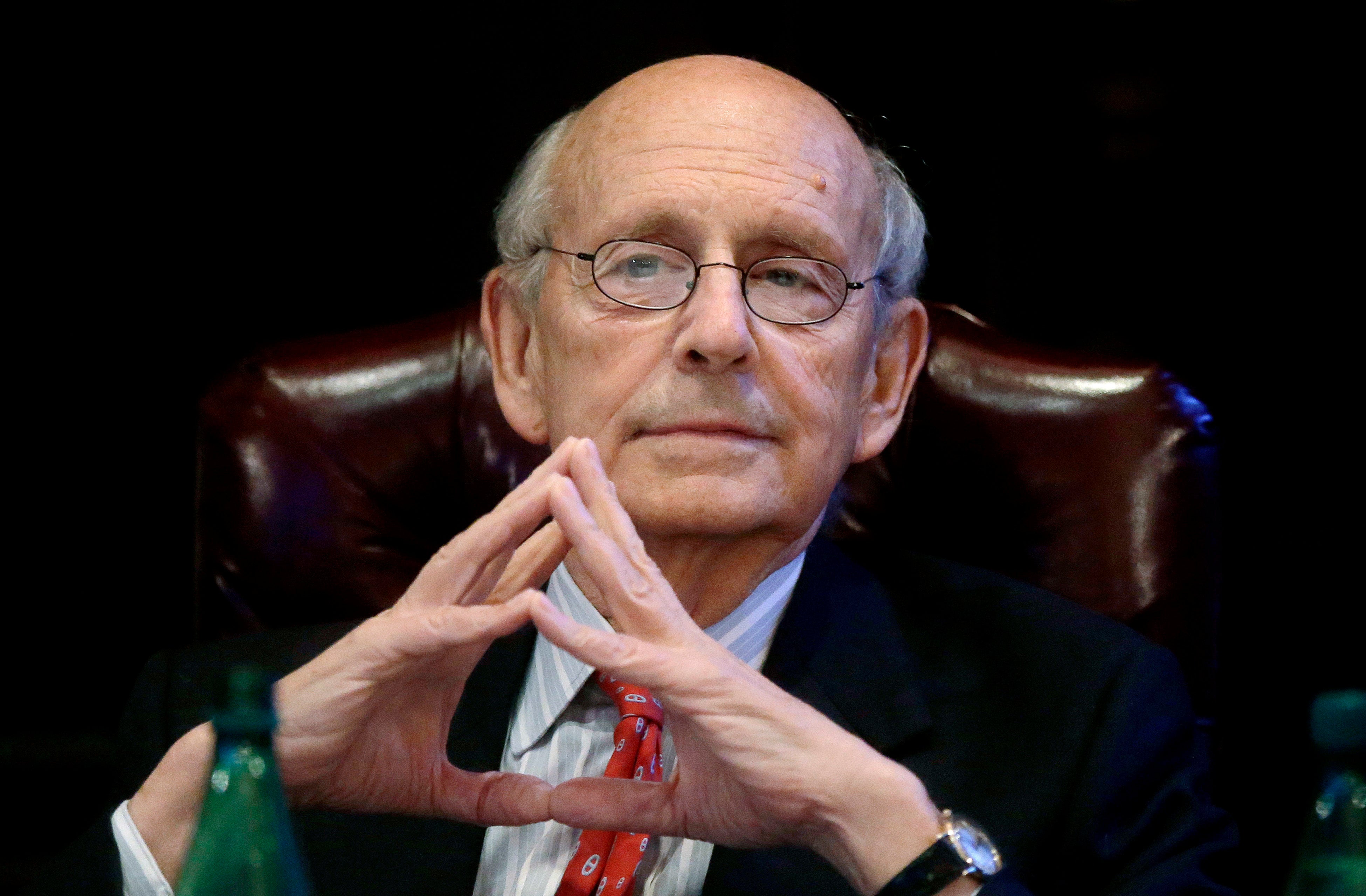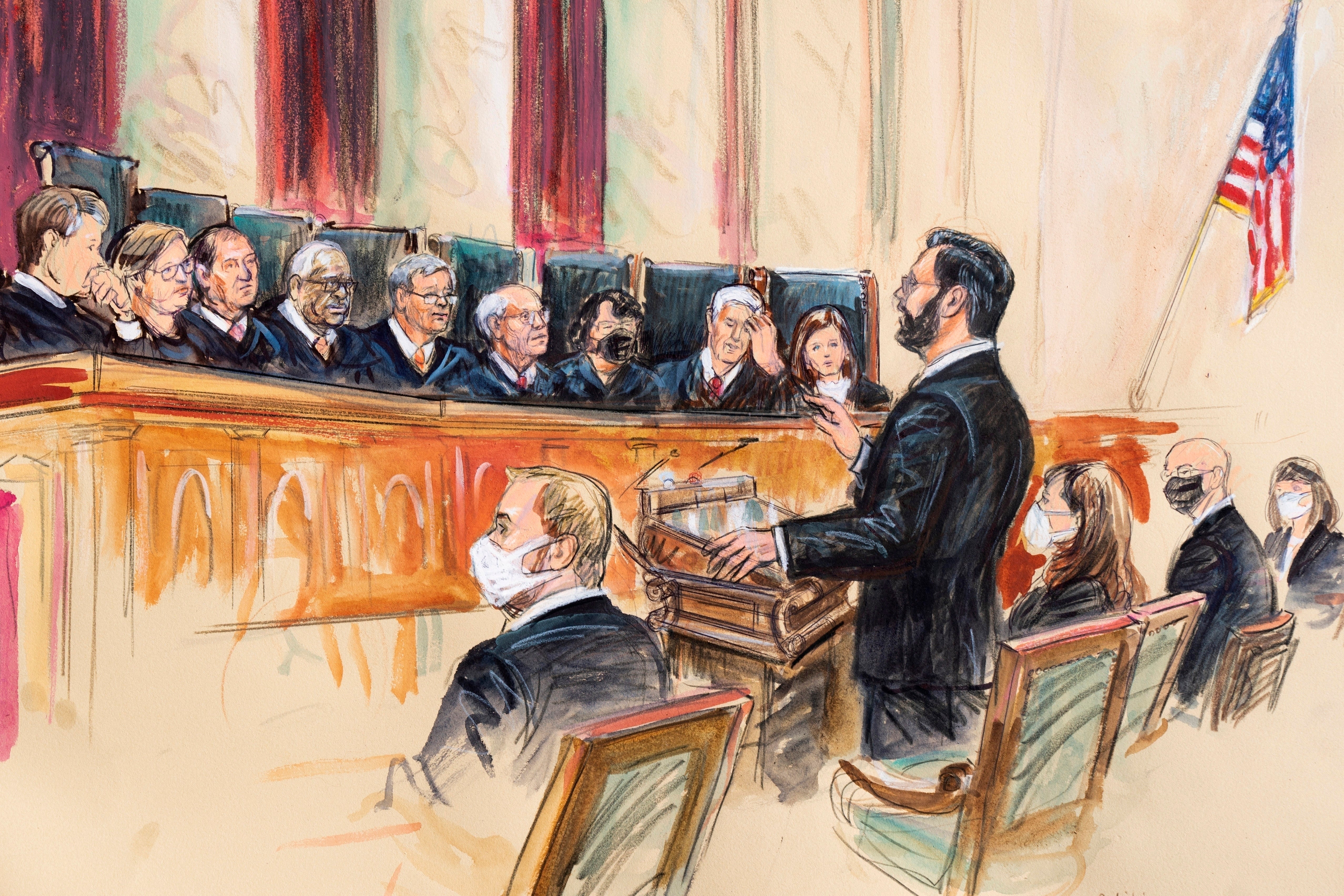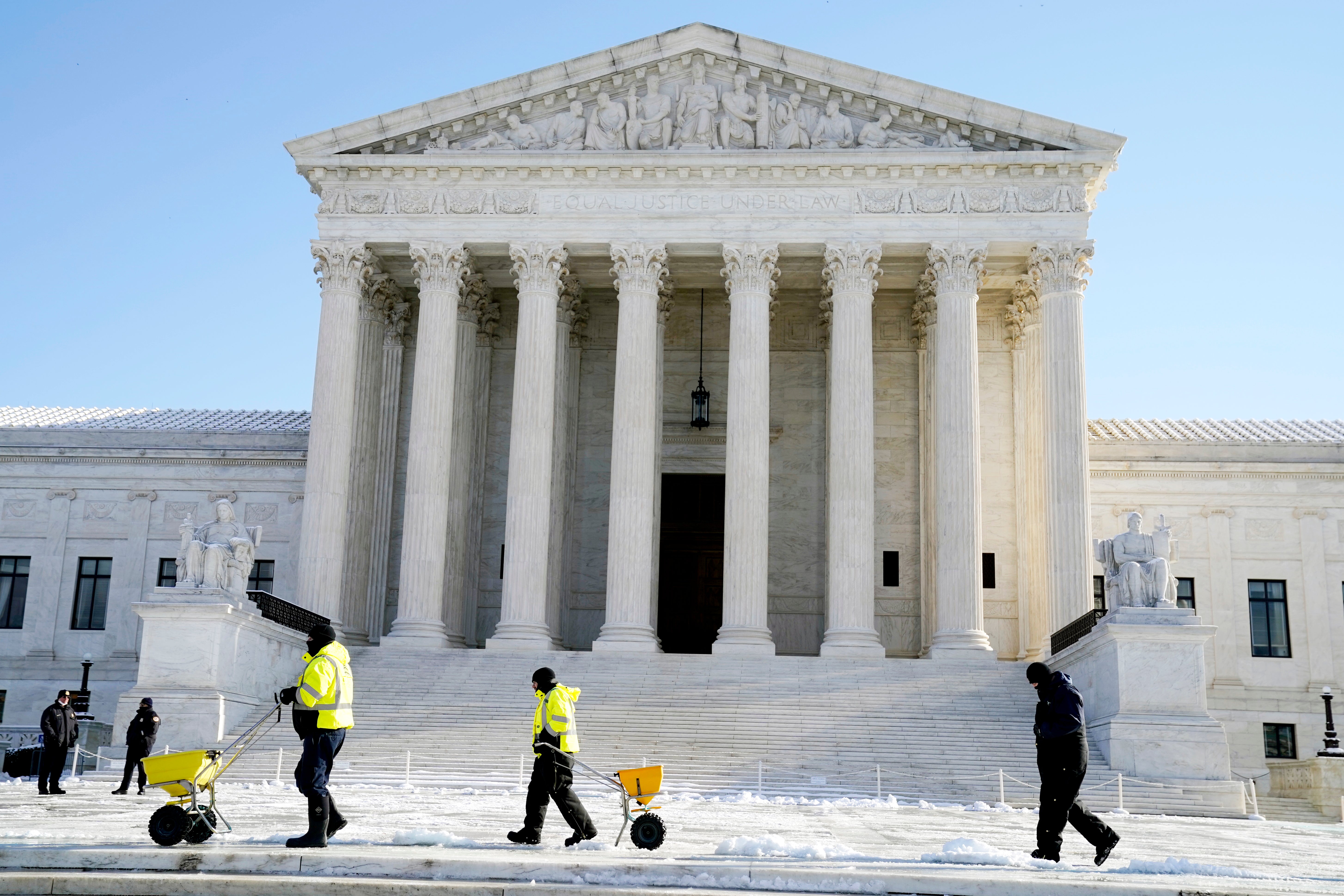How long do Supreme Court justices serve and what is the current political balance?
Newly confirmed Justice Ketanji Brown Jackson will sit on high court following retirement of Stephen Breyer
Your support helps us to tell the story
From reproductive rights to climate change to Big Tech, The Independent is on the ground when the story is developing. Whether it's investigating the financials of Elon Musk's pro-Trump PAC or producing our latest documentary, 'The A Word', which shines a light on the American women fighting for reproductive rights, we know how important it is to parse out the facts from the messaging.
At such a critical moment in US history, we need reporters on the ground. Your donation allows us to keep sending journalists to speak to both sides of the story.
The Independent is trusted by Americans across the entire political spectrum. And unlike many other quality news outlets, we choose not to lock Americans out of our reporting and analysis with paywalls. We believe quality journalism should be available to everyone, paid for by those who can afford it.
Your support makes all the difference.The retirement of US Supreme Court Justice Stephen Breyer sent shockwaves through Washington DC and ended Republican hopes that the next court vacancy would occur while the GOP controls the US Senate.
The court underwent significant changes under Donald Trump’s administration, when over the course of four years, then-president Trump oversaw the confirmation of three new justices to the bench, a third of the total bench, with lifetime appointments, and firmly shifting the nation’s high court to the right,
Justice Stephen Breyer’s upcoming retirement during the reign of a Democratic president means that the court’s overall make up will not change, for now.
President Joe Biden’s nominee to replace Justice Breyer’s seat – Ketanji Brown Jackson, a former federal public defender and appellate court judge – was confirmed by Senate vote of 53-47.
How do Supreme Court appointments work?
Judicial appointments to the Supreme Court are submitted to the Senate by the White House, where they begin their journey in front of the Senate Judiciary Committee. Nominees typically meet with most if not all senators on the panel privately before hearings begin, at which point the discussions about their record, competency, fitness and commitments to their values become public.
The US Constitution does not specify requirements for justices on the bench, but nominees typically have experience at the federal court level either as a justice, attorney, or both in the case of some such as recent addition Neil Gorsuch.
Hearings take place in the Judiciary Committee, which votes whether to send the nomination to the full Senate floor. Until 2017, 60 votes were required for a nomination to proceed through the Senate but that standard was eliminated in 2017 by then-Senate Majority Leader Mitch McConnell, who changed it to a simple 51-vote majority threshold.

Crucially, the Senate majority leader is the one who decides whether a nominee will receive a vote from the full Senate. Republicans used that rule to deny a vote to Merrick Garland, now US Attorney General, in 2020 when Justice Antonin Scalia’s death left a vacancy to fill during President Barack Obama’s final year in office.
Democrats currently hold an exact 51-vote majority in the Senate with the tie-breaking vote from Vice President Kamala Harris, meaning that Mr Biden’s nominee will be confirmed if the party is unified in their support for his pick.
What does the Supreme Court currently look like?
Conservative court watchers were thrilled by the Trump presidency, which saw appointments to the Supreme Court and federal judiciary at a staggering rate. To put the numbers in context, Mr Trump successfully oversaw the confirmation of three Supreme Court justices and 54 nominations to federal courts around the country, compared to two Supreme Court justices and 55 federal judges confirmed to the bench by former President Barack Obama over eight years.
As a result the Supreme Court and the federal judiciary both shifted significantly to the right under Mr Trump’s term. Six justices make up what is commonly considered the conservative majority: Justices Samuel Alito, Clarence Thomas, Amy Coney Barrett, Neil Gorsuch and Brett Kavanaugh, as well as Chief Justice John Roberts. Three, Ms Barrett, Mr Gorsuch and Mr Kavanaugh, were confirmed under the Trump presidency.

On the court’s liberal side are Justices Breyer, Elena Kagan, and Sonia Sotomayor. The latter two were confirmed under the Obama administration, while Mr Breyer, 83, was nominated by Bill Clinton.
Chief Justice Roberts deserves special mention due to his role as a swing vote on some key cases; the most notable recent example was in 2012 when he sided with the liberal wing in a 5-4 decision to uphold a central provision in Mr Obama’s Affordable Care Act, better known as Obamacare, thereby saving the law from its most serious legal challenge.
Mr Roberts’ role has been diminished to some extent with the court’s further rightward shift. The “left vs right” model, however, is not a lock-step guide for understanding any of the court’s justices, and the political majorities of the Court are no guarantee of every case siding in favour of the dominant faction.
What’s next for the Supreme Court?
Two of the court’s justices – both conservatives, Mr Alito and Mr Thomas – are over the age of 70. That could potentially mean another vacancy during Mr Biden’s first term in office, which could be much more significant than the retirement of Mr Breyer in that it would give Mr Biden the opportunity to reverse the court’s rightward shift.

Judge Jackson – the nation’s first Black woman Supreme Court justice, and the first with criminal defense history in more than 30 years – was confirmed on 7 April. She will not formally sit on the court until Justice Breyer’s term ends in summer 2022.
Any further confirmations to the court by Mr Biden would likely be contingent on Democrats retaining control of the Senate in November, already seen as an uphill battle for the party given the number of Democratic senators defending their seats this year. Senate Minority Leader Mitch McConnell has indicated that he would prohibit any nominations that occur “in the middle” of a presidential election to the bench should Republicans take control of the upper chamber.
Whether that means Republicans would block any Biden nominees, or just ones put forth in 2024 is unclear. But the Republican minority has also vowed retaliation for the now-failed effort by Democrats to reform the filibuster and make it harder for the minority party to block legislation.
"If my colleague tries to break the Senate to silence those millions of Americans, we will make their voices heard in this chamber in ways that are more inconvenient for the majority and this White House than what anybody has seen in living memory,” Mr McConnell warned in January.
Subscribe to Independent Premium to bookmark this article
Want to bookmark your favourite articles and stories to read or reference later? Start your Independent Premium subscription today.



Join our commenting forum
Join thought-provoking conversations, follow other Independent readers and see their replies
Comments